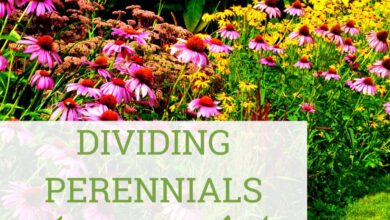How To Make A Sustainable Garden In 9 Simple Steps

[ad_1]
Modern gardening is taking a page out of our ancestors’ playbooks with more eco-friendly and sustainable methods. Creating a sustainable garden is a fun way to help the environment and teach future generations some of their foreparents’ less toxic and damaging ways to grow food and beautify the landscape. Our tips on how to create a sustainable garden will provide simple, easy steps to help advance environmentally positive changes in the landscape.
1. Start a Compost Pile
(Image credit: Dan Brownsword / Getty Images)
One of the first steps in how to make an eco-friendly garden is by making your own compost. It doesn’t have to be fancy but it does have to follow some rules. Whether you are ridding yourself of yard waste or trying to turn kitchen scraps into black gold, composting is an efficient and cost-effective method that will yield rich material to return to the soil. Using a pile, 3 bin set up, compost tumbler, or other methods will all keep refuse from our landfills and result in a desirable product for your plants.
2. Plant for Pollinators
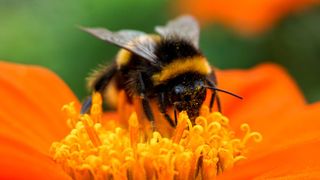
(Image credit: Gary Mayes / Getty Images)
Perhaps you’ve heard of colony collapse in honey bees, or read articles on the disappearance of many species of moths and butterflies. There is something you can do to help our very necessary pollinators. Design a garden that will attract them, provide habitat and nursery sites, food, and water. Native plants are one of the best ways to start a pollinator garden. They are adaptable to their native range, requiring fewer resources to manage, and produce nectar and other food sources, and are attractive to local insects. Planting specimens that produce brightly colored flowers will enhance your garden for both you and our delicate pollinators.
3. Tend to Turf Naturally
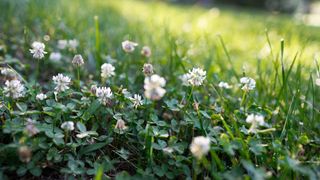
(Image credit: Catherine McQueen / Getty Images)
Whether it is by participating in No-Mow-May or replacing sod entirely, it is possible to reduce the huge amount of water, chemicals, and maintenance in the lawn. Other sustainable lawn care practices include mowing higher and letting mulched clippings compost in the soil naturally. Instead of piling on herbicides and fertilizer, manage problems naturally by regular aeration, thatching, overseeding, and top dressing with compost or steer manure. Water less frequently but deeply, creating a dense, deep root system. Mow as late in the season as possible, and consider allowing the lawn to go dormant in summer. Allow those leaves that fall to remain. Mow over them to mulch them into smaller bits and let them decompose into the roots of the grass as a natural food.
4. Choose Water-Wise Plants
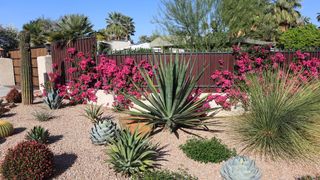
(Image credit: constantgardener / Getty Images)
Water is a precious resource that must be used wisely. Turf lawns are classic villains in a water-wise landscape. Consider replacing turf grass with drought tolerant plants. Among the best eco-friendly garden ideas is the drought or xeriscape garden. This water saver depends upon selecting plants that thrive in areas with minimal moisture.
Native plants come into the conversation again, with their natural ability to survive in the local average rainfall. Even many exotic plants will adapt to a low irrigation garden situation. Succulents like Sedum, Aeonium, and Echeveria are winners in dry sites. Other low-moisture plants are :
- False Indigo
- Dead Nettle
- Speedwell
- Goldenrod
- Bee Balm
- Catmint
- Meadow Sage
- Sunflower
- Anise Hyssop
- Shasta Daily
- Mullein
- Columbine
5. Select Sustainable Vegetables

(Image credit: alvarez / Getty Images)
For vegetable gardeners, selecting certain varieties is a great tip in how to make a sustainable garden. Some foods are known to be water hogs, thirsty all the time and in need of quite a lot of moisture. Still others require applications of fertilizer for high yields. Instead of growing these types of plants, select those that thrive in good garden soil with little intervention. Grow cool season vegetables only in spring where plenty of rain is available. Choose plants that will thrive in your zone, soil, and require less special maintenance. Some of the best vegetables to grow for sustainability are:
- Root vegetables
- Dried beans
- Onions
- Some fruit trees
- Berries
- Cabbage
- Carrots
6. Make Sure You Mulch
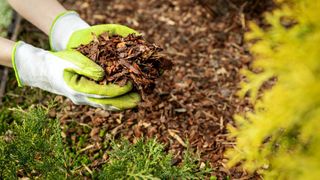
(Image credit: ronstik / Getty Images)
Like composting, mulching can be a great way to clear up yard waste. Natural and sustainable mulch can keep soils cool in summer and warm in winter. It can reduce weeds, minimize erosion, and conserve moisture in the soil. Leaf litter is a powerful tool in boosting tilth and adding nutrients gently. Grass clippings that have dried are great protection in fall around cold sensitive root systems. Even sawdust (from untreated wood sources) is a fine application around plants. Well rotted compost is an effective natural mulch that provides a host of benefits.
7. Opt for Electric Equipment
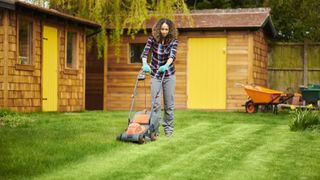
(Image credit: sturti / Getty Images)
I don’t know about you, but the actual smell of a gas powered tool seems toxic to me. Gas emits fumes that include carbon dioxide and other toxins. Electricity is a clean power source, renewable, and one that operates just as well as gas. While it may cost a bit more to acquire electric gardening equipment, over time the operating costs adjust to make them more cost efficient than gas powered items. And you reduce the chance of spills from refilling gas equipment. As an added bonus, electrical machines are much quieter and less smelly.
8. Remove Waste Responsibly
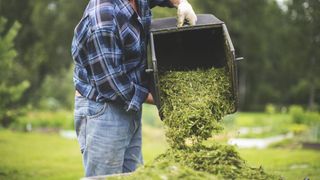
(Image credit: JulPo / Getty Images)
Yard waste is an issue, especially in municipalities without collection bins. In my tiny town, we have what is called a burn pit. It is burnt twice per year and all residents are allowed to bring their clean, green material to the pit. This always bothers me a bit because the pit burns for days, emitting tons of smoke and odor. Instead, composting or turning sustainable yard waste into mulch can return the nutrients back to your land. Lawnmowers are excellent ways to turn small twigs, leaves, and other light items into an organic mulch. Compost piles are equally good over time, at reducing yard waste to useful material for planting, top dressing, and for other uses.
9. Avoid Common Mistakes

(Image credit: lucentius / Getty Images)
There are three common garden mistakes that harm the environment. They are:
- Chief among good gardening practices is selecting the right plant for the right space. Trying to fit a plant into a landscape that has drastically different needs than those currently there requires much more maintenance and the use of more resources.
- Avoid overhead watering which can cause fungal issues and wastes much of the water in run-off and evaporation. Direct water to plant roots where it is not wasted. Use timers where possible to avoid overuse of water and avoid watering in the heat of the day.
- As much as possible, use non-toxic methods to keep plants healthy. Hand-pull weeds and pick larger pests. Use your compost to fertilize plants. Harvest your gray water and use it to water plants. There are many ways to avoid using toxic garden products and save water with a little elbow grease.
[ad_2]
Source link






